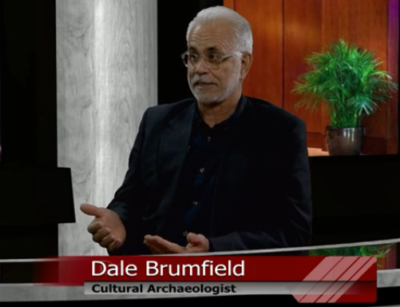Gay Rights Movement with Dale Brumfield
(January 23, 2019) Catherine Read sits down with Cultural Archeologist Dale Brumfield, to talk about the history of the Gay Rights Movement. Looking back to the administration of Dwight D. Eisenhower, Brunfield outlines the struggle faced by so many LGBTQ individuals, and the ongoing fight for equality.
This year will mark the 10th year in a row that the Virginia General Assembly will introduce bills to protect LGBTQ people from housing and employment discrimination. These bills do not ask for special treatment for LGBTQ individuals, only equal protection under the law. In years past, these bills have made their way out of the Senate, but failed to gain passage through the House of Delegates. This year, there are two bills regarding employment non-discrimination (SB 998 and HB 2067), and four bills about fair housing non-discrimination (SB 1109, SB 1232, HB 2677 and HB 1823) that are being introduced. These bills are working their way through committee and will hopefully make it to the floor for a full floor vote in both chambers.
Looking back to 1953 when President Dwight D. Eisenhower issued Executive Order 10450, our history shows that it was commonplace to be able to fire someone for being gay. There was systemic discrimination throughout the federal workforce, and society in general, against homosexuals. Gay people were labeled as sexual deviants, and thus regularly shunned. FBI Director J. Edgar Hoover was notorious for investigating those suspected of being gay, and formulating memos on people that dated back to the 1920’s. This was also during the time of McCarthyism, when many Americans were wrongly accused of being communists, and the two issues were often conflated. Many people who were even suspected of being gay were singled out and fired from government jobs, or shamed to the point of committing suicide.
There was one government astronomer name Frank Kameny who, instead of giving up when he was fired, decided to fight the injustice. He joined forces with Jack Nichols to form the Mattachine Society in Washington, D.C. In addition to acting as a support group for gay people, the Mattachine Society worked to raise awareness and fight for civil rights. Kameny was no stranger to Washington, as his father was an FBI agent, so he changed his name to Warren Adkins to avoid putting his father’s career in danger.
The gay rights movement began to churn forward, and chapters of the Mattachine Society began popping up in other large American cities, such as New York and Los Angeles. Mike Wallace of CBS News hosted the first mainstream documentary about the movement in 1967 entitled “The Homosexuals”, and Walter Adkins was interviewed for the show.

The first widely circulated newspaper to serve the gay community was the Gay Blade (now called the Washington Blade), first published in Washington DC in 1969. The newspaper brought the gay community together, and chronicled LGBTQ news locally, nationally and internationally. In 1968, the Stonewall Riots in NYC were considered the first big act of the gay rights movement that gained national attention. These events were a jumping point for activists who were looking to gain civil right protections.
To this day, the LGBTQ community are still looking for equal protections under the law. Even after marriage equality was passed in the Supreme Court in 2015 with the Obergefell vs. Hodges case, and the federal workforce is protected with nondiscrimination, states like Virginia still lag behind in offering protections for LGBTQ individuals in regards to housing and employment.